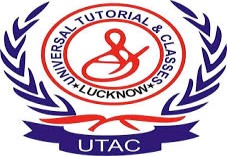Education loans for studying abroad are a boon for students, but there are many flip sides to them too, and hence students need to conduct proper research and read the fine print, that is, “terms and conditions” before taking an education loan from a bank. Many a time, students hurry and fail to research properly about the education loan schemes and the applicable conditions and thus end up taking a loan at a high rate of interest or with repayment policies that do not prove to be suitable for them in the long run. If you are such a student, then there is a good news for you. You can choose to get your education loan refinanced and ease your education loan debt. Read ahead and know more about education loan refinancing.
What is an education loan refinance or transfer?
An education loan refinance is also called an education loan transfer. An education loan transfer or refinance means repaying the old loan with a new loan taken from a new lender. It can also be explained as switching from the old lender to a new lender that offers a lower rate of interest and better terms on the loan. Most Indian banks such as SBI, ICICI Bank, Axis bank, etc., and NBFCs offer options to refinance the education loan.
When should you refinance your education loan
Well, the best time to get your education loan refinanced is after you graduate and start working. This is because once you have a job, your repayment risk reduces. Also, since you have a steady source of income, your risk-taking ability increases, and thus you are in a better position to negotiate the terms and conditions of the loan transfer. Once you get employed after graduating, you can get better terms from lenders for your education loan refinancing.
What are the benefits of education loan refinance
Some of the benefits of an education loan refinance are as follows:
Lower rate of interest – Repaying any loan is a big challenge, and if the rate of interest is high, then the Equated Monthly Installments or EMI will also be substantial. Let us take an example of an education loan of INR 20 lakhs with a rate of interest of 12% and a loan repayment tenure of 9 years. The total interest that needs to be paid is INR 19,68,553. Now, let us assume that this same student gets a job and therefore has been able to negotiate a better loan repayment deal. This new deal will refinance his/her existing education loan at 10% interest. The total interest that the student now has to repay over a period of seven years is INR 11,39,007. We can clearly see that a lower rate of interest helps the student save on the interest which needs to be paid.
Refinance a secured education loan with an unsecured education loan – Students can also refinance their existing education loan with collateral with a new education loan without collateral. This will help the student to reduce the financial burden on their family members who provided them with the collateral. Depending on their career prospects and job profile, banks in India refinance a secured loan with an unsecured loan.
Consolidate different education loans into one new refinanced loan – Some students end up taking more than one education loan to finance their higher education and living costs abroad. Sometimes they may even have borrowed from different entities based in India and the United States. The result of such a scenario is multiple payments, maybe at different times of the month and sometimes even in different currencies. Education loan refinancing in such a scenario can come to their rescue as they can consolidate all their different education loans into one new loan and get it refinanced by a single lender.
Save on Forex fee – Indian students who are working in the U.S and have to repay their loan amount in INR, GBP or EUR are required to remit an FX fee to get their USD converted to INR. This conversion requires a commission that may go up to 5%. To avoid paying this commission, students can get their existing loan refinanced in USD. This way they can avoid the commission they have to pay monthly as well as changes associated with currency fluctuations.
Extend the loan tenure- There may be times when due to unforeseen circumstances, a student might not be able to complete his/her course in the stipulated time. In such a case, banks can extend the time required by the student for the completion of the program. This extension would imply extending repayment period of the principal amount or the moratorium period. Banks can also provide 2-3 extensions, of 6 months each, to the moratorium period during underemployment or unemployment. In both the above cases, restructuring of an education loan will help students. Students can opt for a restructured loan with an extended tenure with a lower monthly EMI. However, it should be noted that the total interest amount would go up in this case.
Eligibility to apply for refinancing of education loan
The eligibility requirements to apply for refinancing of an education loan differ from bank to bank. However, most lenders look at the following things when refinancing an existing education loan –
Income
Credit history
Credit score
Debt-to-income ratio
Financial behaviour
Employment history
Residency status
Process involved in education refinance
To get their education loan refinanced, borrowers need to get in touch with their current lender and apply for a loan foreclosure with the following documents :
A foreclosure application letter
Students also need to apply to the new lender for refinancing their existing education loan. For this, there is a list of documents that need to be submitted. This list differs from lender to lender and the type of loan applied for. However, some common documents required are:
Age and address proof
Income proof
Photo for KYC
Documents given by the previous lender
Property documents (in the case of secured loan)
Bank Statements
Once the new lender approves the loan refinancing, it addresses a cheque for the outstanding loan amount to the previous lender. Once this cheque is realized, the previous lender will foreclose the loan and hand over all the original documents of the borrower.
What are the key points to watch out for while opting for a new lender
Some points that need to be kept in mind while refinancing an education loan are as follows:
Compare the foreclosure charges being paid to the existing bank and the sum of the processing fee and documentation charges being paid to the new bank with the total savings being made with the restructured loan. Choose restructuring of the education loan only when the savings are substantially more than the charges being incurred in getting the loan refinanced.
Make sure that your CIBIL score is good. Most banks will reject a borrower’s application for loan refinancing if his/her CIBIL score is below 600. And if at all they agree to refinance, they will do it at a higher rate of interest, thereby not helping the borrower at all.
Opt for loan refinancing during the early stages of your loan repayment. A student who has a loan repayment period of 5 years will only benefit from loan refinancing if he/she opts for it during the first two years of loan repayment. The basic thought here is that the borrower should have enough time to reap the benefits of the refinanced loan.
Read the loan transfer document carefully and understand each point. This will help the borrowers to be completely informed and aware of the implications of the binding terms and conditions before signing on the dotted lines.
Students who wish to find out how a lower rate of interest may affect their EMI can use the student EMI calculator of GyanDhan. They can also get in touch with us here for help on loans & refinance for both Indian and international students.
You Might Want To Read:
Multimedia System Question Paper 1 2012, Net Law Question Paper 10, Sat Science Question Paper 2 2015 Solved, Srigayatri Educational Institutions Vs J N Chemistry Institute, Best 5 Neet Coaching Institutes In Guwahati, Delhi University Honours Programb A 2Nd Year Mock Test Paper 17, Physics Fluid Mechanics Notes, Cbse Students, Thesis Paper Writing Tips, Gre Probability Question Where We Involve Event A Event B Video
Leave your vote
This post was created with our nice and easy submission form. Create your post!










Like what you read? Give author a thumbs up?
Bookmark this article to read later, drop a remark in comment section and share with your friends..